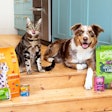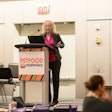The natural pet food category may represent the classic example of the saying, “If it ain’t broke, don’t fix it.” Despite the lack of a regulatory definition, despite a far-ranging assortment of label claims used by pet food companies (and, sometimes, complained about by their competition) and despite the resulting consumer confusion, US pet owners seem to keep buying pet foods labeled “natural”—to the tune of US$7.3 billion in 2014, according to Packaged Facts.
Now, before anyone gets derailed over my “lack of regulatory definition” comment, I do know that the Association of American Feed Control Officials (AAFCO) includes a limited definition for “natural” in its Official Publication. However, that is not quite the same as a legal or regulatory definition; and even some labeling and regulatory experts acknowledge that when it comes to using a natural label claim on a pet food, just about anything goes.
You can’t blame pet food companies for jumping on that lucrative bandwagon. US sales of natural pet foods increased at a compound annual growth rate (CAGR) of 15.2% from 2010-2014, Packaged Facts says, and are projected to grow at 14.6% CAGR from 2014-2019.
“Natural remains pretty much the only game in town when it comes to high-growth dog and cat food items,” Maria Lange, senior product manager of GfK’s Retail and Technology team, said. “Dog and cat owners have shown a willingness to pay extra for emerging benefits—such as gluten-free and freeze-dried—that often mimic the ones seen in human food. Manufacturers and retailers need to give their customers access to the latest talked-about SKUs while keeping actual sales dollars in perspective; categories posting the highest growth and capturing the most headlines may still be minor forces when it comes to meeting revenue targets.”
Further, at this year’s Global Pet Expo, Lange said natural pet food and treat sales have increased 7.4% since 2013 in the US pet specialty channel and accounted for eight of 10 new pet food items in 2014.
Note the benefits that Lange gave as examples—gluten-free and freeze-dried—in discussing the natural pet food category. Of course, those two examples could be considered pet food categories on their own, especially freeze-dried, or at least sub-categories. In any case, they illustrate just how wide a variety of benefits might be applied under the “natural” label.
While there seemingly is no downside to this in the pet food market, that doesn’t mean it could be smooth sailing forever. As pet food follows human food, consider this sobering statement from A. Elizabeth Sloan in “The Top Ten Food Trends” in the April 2015 issue of Food Technology magazine: “Natural food claims on new products have fallen 11% between 2007 and 2013, likely due to class action lawsuits and lack of a regulatory definition,” according to Datamonitor.
So, while that lack of regulation doesn’t seem to be hurting pet food (yet), it may be dampening product development in natural human foods, though all the sales trends Sloan cites are positive. It’s worth noting that the benefits and claims associated with the natural category in human foods are just as all over the place as in pet food; Sloan’s data points cover local, organic, non-GMO, minimally processed and “free from” products, with the latter category including no preservatives, chemical additives or high-fructose corn syrup.
She also disparages the “free from” concept as a fad, lumping it with “gimmicky flavors and me-too line extensions” as niches that she believes are dangerous because they will “stifle industry growth.” If that’s true, will pet food follow that human food trend, as it has so many others, and also see a decline in natural product innovation? Are we already seeing it?
Positive pet food safety article
On another note, I feel compelled to compliment one of Sloan’s fellow writers in the April issue of Food Technology. In “The Pet Food Cupboard Isn’t Bare,” Neil H. Mermelstein writes about the US agencies that regulate pet food, as well as other organizations “involved in pet food standards and regulations.” This secondary group includes entities such as AAFCO, the American Feed Industry Association, FDA Center for Veterinary Medicine and Pet Food Institute.
I have to admit that when I first saw the topic of pet food safety listed in the IFT Media newsletter I receive (IFT, or Institute of Food Technologists, publishes Food Technology), I braced myself. Accustomed to seeing most media coverage of pet food safety misinformed at best and inaccurate or downright biased at worst, I found this article to be a delightful surprise: a straightforward, objective explanation of how pet food is regulated in the US and how the safety of pet food products is ensured. I encourage everyone in the industry to bookmark it and send it to anyone who questions the safety of pet food.

















